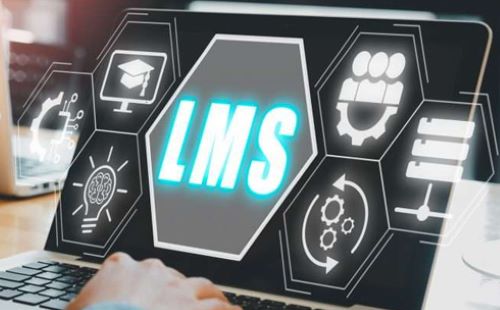

In the business environment, companies are constantly seeking innovative methods to elevate their training initiatives. One popular approach that has garnered attention is incorporating a Learning Management System (LMS) into their operations. The integration of Salesforce as an LMS can transform training by merging the capabilities of a leading customer relationship management (CRM) platform with learning features.
This article explores recommendations for optimizing Salesforce LMS in training, addressing key areas like content development and organization, learner involvement, data analytics, and customization.
1. Developing and Organizing Content: Ensuring Uniformity and Productivity
Crafting informative content is essential for delivering effective learning experiences. With Salesforce LMS, companies can streamline the creation and organization of content using highly useful tools. Hire a salesforce developer to implement templates and structures across courses or modules, ensuring consistency and maintaining brand identity throughout the training content.
Additionally, teams can collaborate seamlessly in time through cloud-based platforms integrated with Salesforce LMS. This not only aids in content creation but also enables instructors to seek feedback or revisions directly within the system.
2. Encouraging Learner Engagement: Interactive Learning Experience
To enhance learner participation, it’s crucial to maintain their interest throughout the training process. Utilizing the in-built features of Salesforce LMS can help in creating learning experiences that truly engage learners.
One effective way to boost engagement is to include multimedia elements like videos, infographics, quizzes, and gamified elements such as badges or certificates within the modules. Additionally, providing access to subject matter experts through forums or discussion boards can further enrich the learning experience. If this sounds complicated, don’t worry—all of these features are easily accessible through integrated tools.
3. Harnessing Analytics: Monitoring Progress and Customizing Learning Paths
Utilizing analytics is key to monitoring progress and personalizing learning paths within training programs. With Salesforce LMS, administrators can effectively track learners’ advancement, identifying their strengths and areas needing improvement. Customizable reports and dashboards offer insights into courses, completion rates, engagement levels, and feedback from learners.
By utilizing this data, instructors, and organizations can make decisions about refining content, tailoring learning paths to better meet individual needs, and pinpointing areas where additional training may be necessary to bridge knowledge gaps.
Lots of good teams are trained by Salesforce CPQ Implementation Consultants who know all the practical methods for applying insights in real learning environments. This kind of direction helps organizations turn raw information into meaningful improvements that support sustained growth and stronger performance.
4. Seamless Integration with Existing Platforms: Centralized Training Ecosystem
Another advantage of using Salesforce LMS is seamlessly integrating with existing platforms. This integration streamlines all learning activities into an ecosystem that promotes a learning environment for participants.
When it comes to connecting Salesforce LMS with existing CRM systems or integrating with collaboration platforms such as Slack or Microsoft Teams, the integration process makes learning smoother and enhances accessibility. This allows learners to access training materials through their channels without having to switch between applications.
5. Continuous Learning through Personal Development Plans: Flexibility for Employee Growth
Continuous learning is promoted through development plans within Salesforce LMS, which enable organizations to create customized plans for employee growth and skill enhancement within the system. These plans detail courses or modules that employees should complete based on their roles or career goals.
By supporting self-paced learning paths tailored to individual needs, organizations can ensure that each employee has the resources for growth and progress.
6. Enhancing Virtual Collaboration: Facilitating Remote Learning and Collaboration
Facilitating learning and collaboration improves virtual collaboration in today’s era when remote work and virtual teamwork are increasingly prevalent. Organizations need to adjust their training programs with the global workforce shifting towards remote or hybrid models. Salesforce LMS offers tools that enable learning and collaboration. Through the integration of video conferencing tools like Zoom or Webex directly into the LMS platform, organizations can conduct training sessions where participants can engage in real-time interactions.
Utilizing Salesforce LMS creates a participatory learning atmosphere reminiscent of in-person training sessions. Moreover, instructors can establish classrooms through Salesforce LMS, allowing learners to collaborate on group assignments and engage in discussion forums. These innovative functions promote communication and teamwork among staff, enhancing the learning journey.
Closing Thoughts
Incorporating Salesforce LMS into your corporate training approach opens up a realm of efficiency and effectiveness in employee development. By adhering to practices such as simplifying content creation processes, boosting learner engagement with activities, leveraging data-driven insights for personalized experiences, integrating existing systems for centralized access, and providing tailored employee growth plans, you can do wonders for your employees.
Remember that making the most of Salesforce LMS demands dedication, involvement from stakeholders across departments, and assessment of performance data and adjustments based on feedback. To fully embrace the potential of this tool, ensure regular evaluation and enhancement of your corporate training scheme for optimal outcomes.


